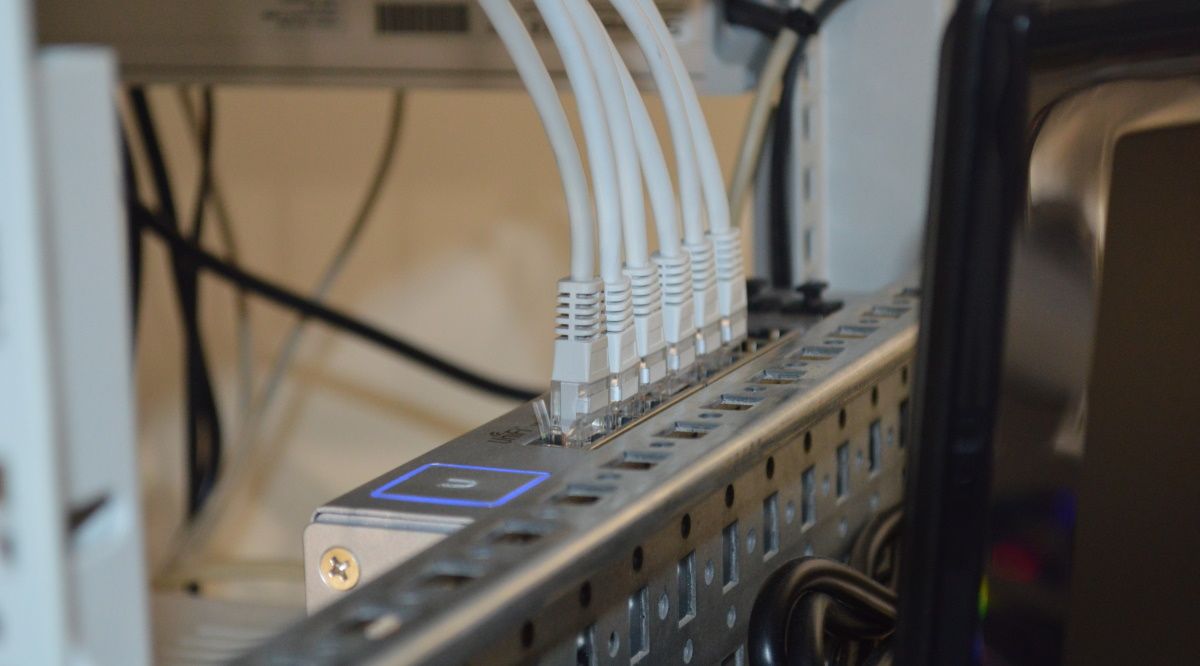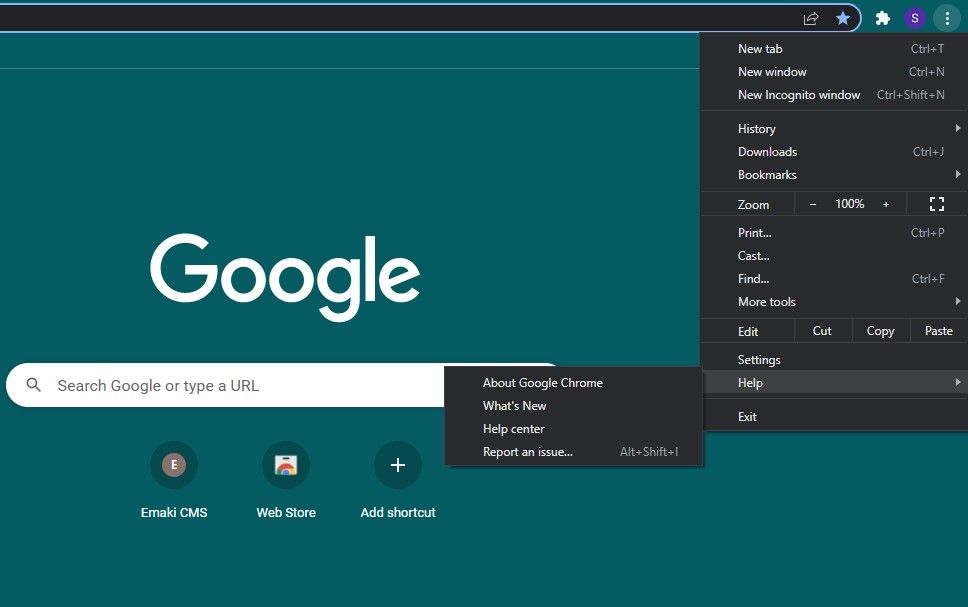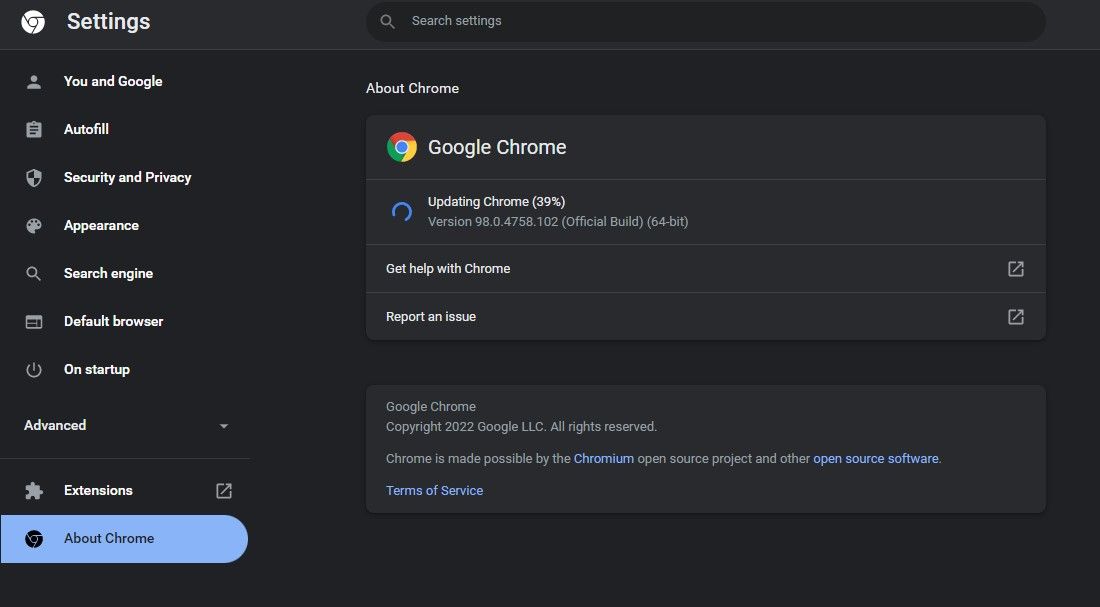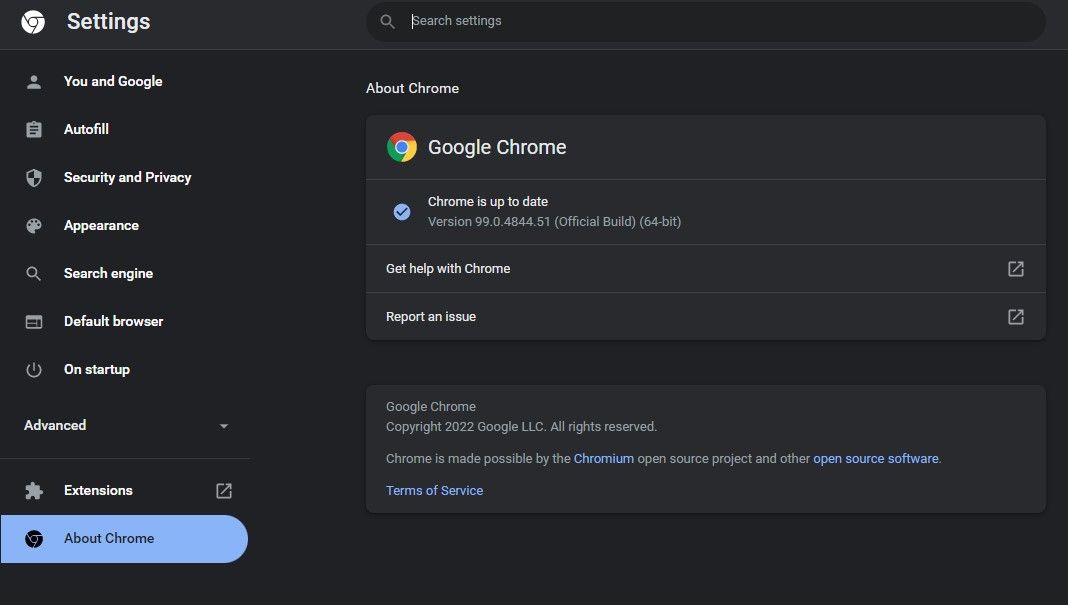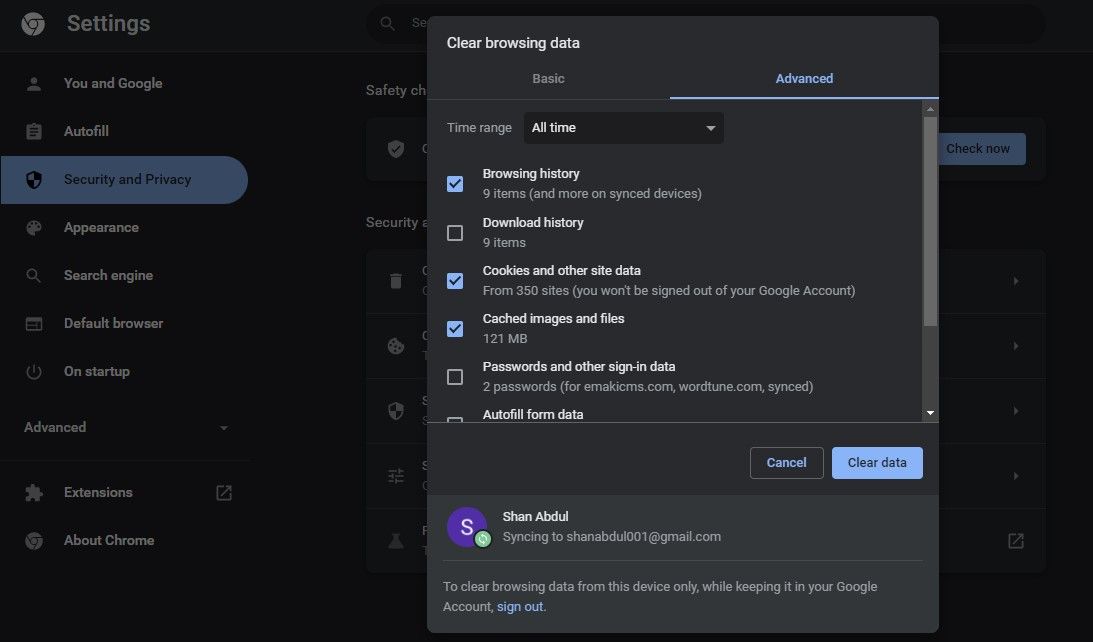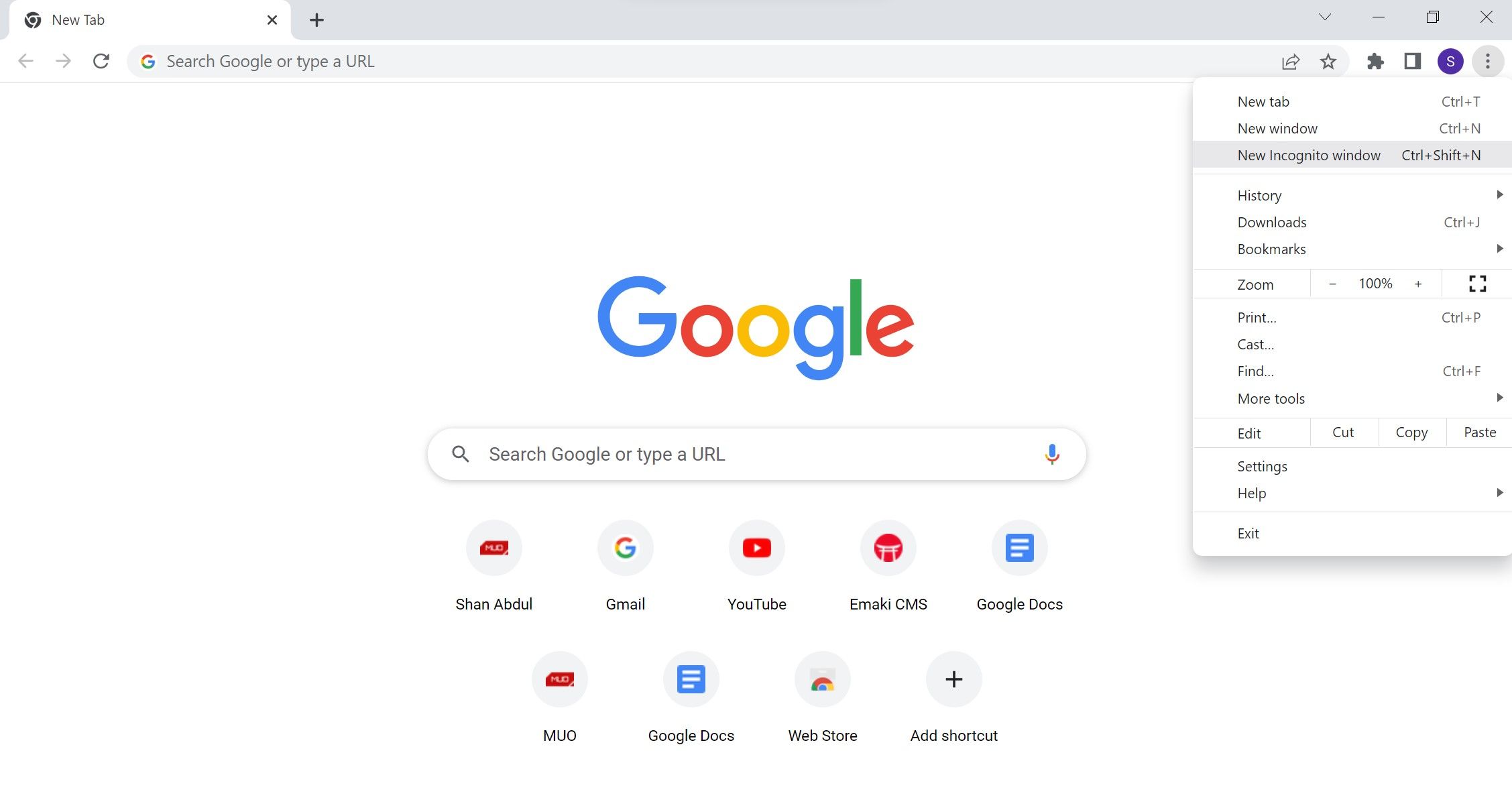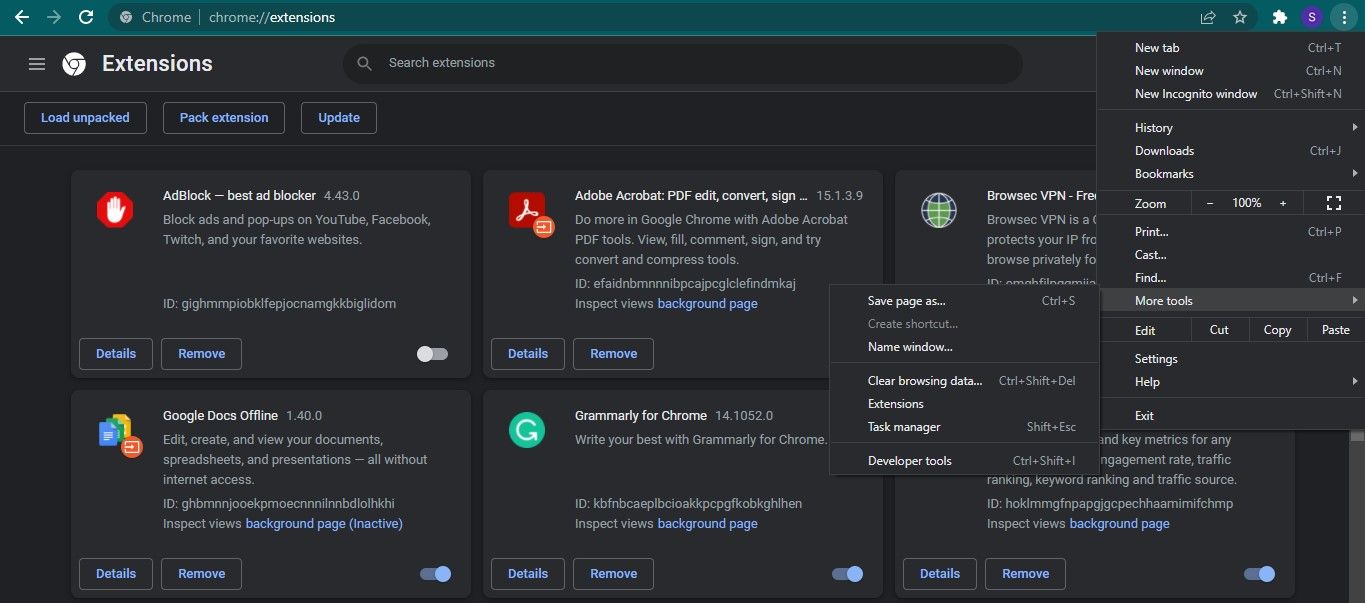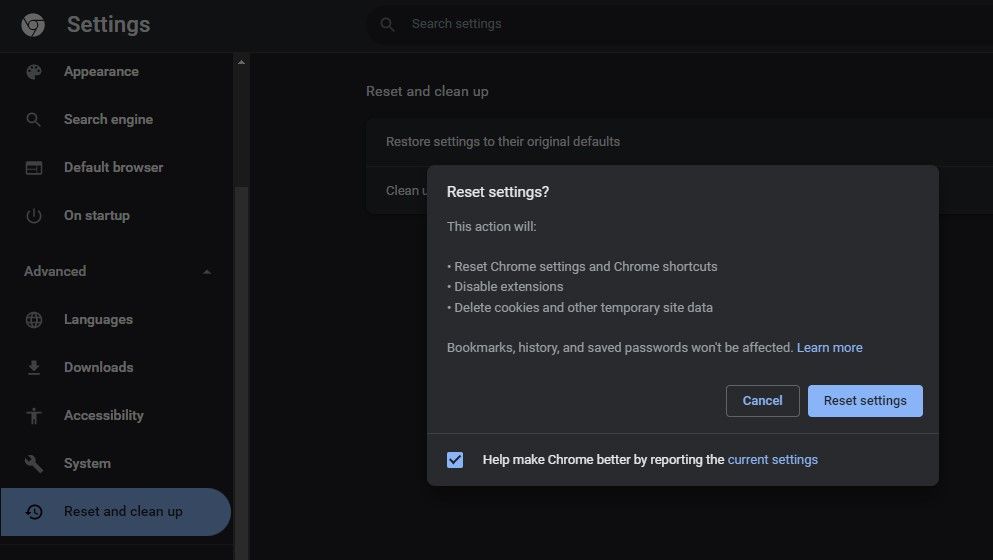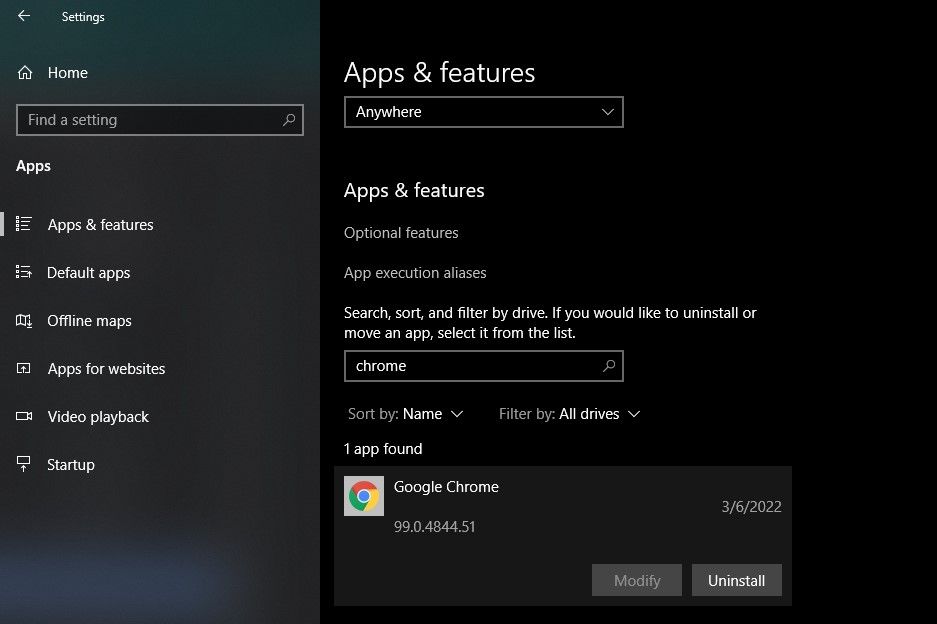It isn't uncommon for browsers to stall at times when opening a specific website, rendering an image, or playing a video. A common error one may see during video playback in the Chrome browser is "The media could not be loaded, either because the server or network failed or because the format is not supported".
The error stems from your browser rather than the website where you're trying to watch the video. Here, we have compiled a list of fixes you can use to resolve the issue if you are experiencing the same problem.
1. Rule Out Internet Issues
First, rule out internet issues. Try playing anything else in the same browser to see if it works. If the internet is to blame, restarting the router and reconnecting the internet will resolve the issue. If that doesn't work, you can also apply some OS-specific solutions to fix internet issues on Windows and macOS. Should nothing else work, contact your ISP.
Start implementing the below fixes when it is not an internet issue and only occurs on one web page.
2. Rule Out Server Issues
The error could be caused by a problem with the server on which the video you're playing is hosted. Therefore, you must rule out this possibility.
For that, open a different browser on your device and play the video there. If the video fails to play, you can try to play it on another device (if you have one) instead. It is most likely a server-side issue if you encounter the same error on other browsers and devices.
There is nothing you can do about server-related issues. Therefore, you'll have to wait until the problem is resolved.
3. Refresh the Webpage
Refresh the webpage where you're seeing this error. Give the video a fresh start after refreshing. If the error persists after refreshing the webpage and restarting the video, it may be more severe and require further investigation. Continue with the rest of the fixes in that case.
4. Change Your DNS Server
You may also encounter the "the media could not be loaded" error because of restrictions from your ISP. This is more likely to happen if you're using Wi-Fi in a library or college, where administrators might have imposed restrictions.
You need to change your DNS server to eliminate this possibility. If you're using a device running Windows, it's easy to change DNS servers on Windows 11. And those on macOS are able to change their DNS settings on a Mac just as easily.
5. Update Chrome
An outdated browser can often lead to the issue in question. Consequently, if you keep the Chrome auto-update setting disabled, it might be time to activate it and update your browser manually.
-
If you are unsure if your browser is updated, click on the three vertical dots in Chrome's top-right corner.
- Navigate to Help > About Google Chrome.
-
If the browser isn't updated with the auto-updates not turned off, it will automatically search for available updates and update itself to the latest version.
-
Enable Chrome auto-updates to prevent the same issue from occurring again. If Chrome is already on the latest version, you will see a message saying, "Chrome is up to date."
The message ensures that outdated Chrome wasn't causing the trouble. The next step would be to check whether you're accessing the video on the webpage using a VPN.
6. Disable or Enable Your VPN
Even though VPNs protect your privacy, they can sometimes impede your browsing experience. So, if you're accessing the video while the VPN is enabled on your browser, disable it. This fix also works the other way around, so you can access the video by using a VPN if you weren't using one before.
Sometimes, access to specific media embeds is restricted from certain locations. Using a VPN connection will eliminate this possibility. When disabling or enabling the VPN fails to resolve the problem, it's time to clear the browser's cache and history.
7. Clear Your Browser's Cache and History
The cached data speeds up the loading of webpages by storing some on-site elements from the previous visit. However, it piles up when left unchecked and adversely impacts browser performance. Hence, it is imperative to clear the cache to prevent cache inference.
To clear Chrome's cache and history, follow these steps:
- Press Ctrl + H to open Chrome's History page.
- Click on Clear browsing data on the left-sidebar.
- Check the boxes for Browsing history, Cookies and other site data, and Cached images and files.
-
Hit the Clear data button.
It is also possible to clear history in other browsers similarly. After clearing it, try accessing the video on the webpage again. Is the error persisting?
8. Check for Profile-Specific Issues
In some cases, the issue can be specific to your browser profile. To rule it out, try playing the video in an Incognito window.
To open an Incognito window, click on the three vertical dots in the top-right corner of Chrome, then click New Incognito window. Afterward, visit the same website and play the video.
If the video plays successfully this time, this suggests that the problem is profile-specific. So, log in with another profile on your browser and play the video again.
If you do not encounter any errors on the new profile, you should abandon your old profile and switch permanently to the new one. However, if switching profiles or using an Incognito window does not help, try applying the next fix.
9. Disable Ad-Blocker Extensions
Ad-blocker extensions block the advertisements on websites by directly interfering with the site's script. Such interference can also result in some site content not loading correctly or preventing HTML tags such as <video> tag from running, resulting in the error we're discussing. Temporarily disabling such extensions may help resolve the problem.
To disable an ad-blocker extension, follow these steps:
- Click on the three vertical dots in the top-right corner.
- Go to More tools > Extensions.
- Find the ad-blocker extensions in the installed extensions.
-
Use the toggle to disable the extension, or hit Remove to uninstall it from Chrome.
If disabling ad-blocker extensions fails to resolve the issue, there are a few more things that you can try.
10. Download the Video
If none of the fixes have worked for you, you should consider downloading the video you're having trouble playing. Many video downloaders allow users to download videos from websites. Choose one of them and try to download the video.
With this alternative, you can watch the video after downloading it. However, if you want to avoid downloading videos every time you want to watch an embedded video, you should fix the root cause. To achieve that, continue to implement the remaining fixes.
11. Reset Chrome
If none of the above fixes work, it's best to reset Chrome. It will revert all the changes you've made to the settings so far, eliminating the possibility that customizing them is causing the problem. It will, however, revert all customizations, so you'll have to start setting up the browser from scratch. Be aware of that risk before you reset it.
To reset Chrome, follow these steps:
- Click on the three vertical dots in the top-right corner.
- Go to Settings.
- On the left sidebar, click the Advanced drop-down menu.
- Click on the Reset and clean up button.
- Click on Restore settings to their original defaults.
-
Then click on Reset settings.
If resetting the browser doesn't work, consider reinstalling the browser from scratch as a last resort.
12. Reinstall Chrome
Even though resetting the browser will give it a fresh start, reinstalling it will nullify the possibility of restrictions on both the browser and the OS side. But before you do that, uninstall it properly.
Follow these steps to uninstall Chrome in Windows:
- Open the Windows Settings app.
- Navigate to the Apps section.
- In the Apps & features settings, type Chrome in the search box.
-
Click on it and hit Uninstall.
Uninstalling Chrome in macOS requires some slightly different steps, but is just as easy.
After you uninstall Chrome, grab a fresh copy of the browser and install it again. A fresh reinstall will likely resolve the issue and improve your browser's performance as a whole.
Still Unable to Resolve the Error?
Hopefully, you fix the browser issue and watch the video you were trying to play with these fixes. If none of the troubleshooting steps resolved the issue, consider switching to another browser as a last resort. You may consider permanently switching from Chrome if the web page's video works fine in a different browser.
Is your Chrome browser always lagging? By tweaking some Chrome flags, including GPU rasterization and zero-copy rasterization, you can speed it up.



